We humans tend to obsess on how good something can be, how fast it can go, and what farkles it needs for higher performance even before we determine what vehicle we actually need or would use.
Adventure bikes are a prime example. Just like in the superbike class, where horsepower wars in the 1990s and aughts gave us super-high-performance bikes nearly unrideable at the limit by the common man, the modern ADV bike is a wonder of high performance that can be quite a beast when ridden at the limit.
Let's consider the lesson of superbikes: When Yamaha introduced its all-new YZF-R1 in 2014, it was up on power but didn't crush the class-leading BMW S1000RR on the dyno and didn't make massive top-speed boasts. But this super-bike promised to be easier, safer, and more fun to ride. It wasn't only built to see how fast the bike could go with an expert rider; it was also built to help all of us ride faster and safer.
Still with me? Good! Because this last concept illustrates an issue I've had with adventure bikes for years. Sure, experts like world adventurer Helge Pedersen can get anywhere on his BMW R1200GS (Darién Gap, anyone?), and, yes, Red Bull's Chris Birch does incredible things on his KTM 1190 Adventure, but I'm not that guy. Nor, I suspect, are most of you.
So for this adventure issue, we've taken a different tack. Rather than using all expert-level off-road and adventure riders, we split the group between a pair of solid all-around riders—yours truly and Associate Editor Bradley Adams—and two guest testers with real dirt cred. Davin Wirtanen owns a 2012 Triumph Tiger 800, a Husqvarna FE 501 S, and a Yamaha WR250R, while Steve Kamrad has a 2012 Triumph Tiger 800 and a Husaberg 390 FE in his garage. Both guys participate (or compete in) adventure rallies all over the country, and although neither has the mad skills of Johnny Campbell, both were game to join our long-weekend adventure with almost no information.
For this test we gathered two class staples—the BMW R1200GS Adventure and the KTM 1190 Adventure R—and matched them up against two newcomers: the Ducati Multistrada Enduro and Honda Africa Twin. Best of all, we took all four of them to the Cycle World Adventure Rally in Gunnison, Colorado, to see which made adventure riding the most fun, confidence inspiring, and accessible.
Coming into the test, Adams was the only one of us who’d spent time on the newest GS, and he was the only one who didn’t expect to hate it.
The thing about the GS is that it's just soooo big. Like, massive. Wirtanen likened it to riding a small country, and it definitely feels like it the first time you climb aboard. On top of it being 582 pounds with empty saddlebags, the fuel tank is enormous (its 8.7 gallons are admittedly nice when you're way off the grid) and makes you feel like you're riding a hippopotamus. The massive cylinder heads jut horizontally from the frame, adding to feeling of heft and girth.
Despite all this, the GS Adventure’s great size and weight don’t negatively impact the performance as much as they should. We can thank Motorrad’s 36 years of research and development in the adventure world for that.
We should also thank the GS’s incredible electronics package, which helps keep all that weight and power in check without your knowing it (unless you make the foolish decision to turn rider aids off). We ran our GSA in Enduro Pro mode most of the time, which is designed around the use of knobby tires and disables the ABS at the rear, allows more slip when on the gas, and sets the Dynamic Electronic Suspension Adjustment (ESA) into what BMW calls its “traction oriented and optimum bottom-out setup.” We found this setting stable for almost everything we threw at it, especially at low speeds.
“Rocks, gravel, sand, and clay are all easily dispatched on the most stable bike possibly ever made,” Kamrad enthused.
“The Telelever front end and electronic suspension on the cow [BMW] were incredible,” Wirtanen chimed in. “With all the jumps, logs, rocks, and whatever else we ran over, you wouldn’t think this thing only has a 19-inch wheel up front.”
The difficulty with all that heft is that, once the GS starts to go down, it’s really hard to save. Kamrad had a pretty good tip-over coming down a steep hill covered in grapefruit-size rocks. Just watching him try to pick the thing up was exhausting. Mass can be masked when rolling, but when it comes to righting a fallen beast, it’s just dead weight.
While the BMW generally seemed to defy gravity and its electronics were highly effective in assisting the rider in all kinds of terrain, its too-light flywheel gave all of us issues with stalling in low-speed maneuvers (and stalling a bike this heavy and wide is no fun). Also, the standard seat is too soft, which killed my backside after an hour or so in the saddle.
“The BMW just feels so well thought out and complete,” Adams said. “It’s amazing to me that a motorcycle this big and heavy can feel as balanced at slow speeds, plus capable in serious off-road riding situations.”
The R1200GS remains an impressive ADV bike. It’s good at so much. However, our less-experienced testers, while impressed with the GSA, still felt intimidated by its size. In the right hands, the GS can do a lot of things you might not expect, but for overall ease and approachability in tough conditions, we were more apt take an easier path.
KTM took an entirely different approach than BMW when designing the 1190 Adventure R, which can be likened to a dirt bike on steroids.
For the expert rider, the 1190 Adventure R is the cream of the crop. The suspension, as we’ve reported, is as good as we’ve seen on a production motorcycle meant for the dirt. Not only that, but its highly effective ABS and traction control are hardly noticeable to expert-level riders, allowing for advanced riding techniques and more outright speed than anything else out there.
But, as we have discovered in the past, the KTM also feels less stable, carries its weight higher, and has less ergonomic room than the Beemer. All four of us felt cramped by the seat-to-pegs distance, and we felt the bars were way too low, forcing us to hunch over when standing.
While the KTM is the choice for rally-level experts, we mere mortals found it an awkward fit and a little jarring to ride. We never hit a place where the Katoom let us down, but all four of us struggled to be comfortable in many conditions and found its aggressive setup a little unnerving. Especially when the glaring sun obscured some potholes and we hit a water crossing that wasn’t completely flat…
When you factor in things like no cruise control, a windscreen that doesn’t do a whole lot, and an electronics package that, like the Honda, doesn’t stay in the mode/settings left in once the bike is turned off, your impression of the KTM as an everyday ADV might sour a bit.
Coming into the weekend, Wirtanen was looking at the testing experience to solidify the KTM as his next purchase. And I couldn’t wait to spend more time on it after several good experiences on one. By the end of our first morning, after completing our Adventure Rally-kickoff obstacle course, Wirtanen was reconsidering.
KTM takes its “Ready to Race” slogan to heart. The 1190 R is the ADV bike our experts would most want to race, but for the casual explorer of more moderate ability, the quickness and aggressiveness of the chassis, suspension, and engine hacked away at some of the confidence we needed to get where we wanted to go. It’s our aspiration, one day, to ride this KTM for all it has to offer.
It is impossible to ignore KTM and BMW when arranging a big-bore adventure bike shootout. The new Ducati Multistrada 1200 Enduro, on the other hand, made the list more out of curiosity. We didn’t know what to expect. An Italian sportbike for the dirt—yeah, we’ll give that a shot.
Imagine our surprise when all of us actually developed a huge crush on the black machine.
Ducati isn’t like the others. It feels like it was designed in a lab and the research and design team forgot to look at the competition to see what was working. But that doesn’t necessarily mean it doesn’t work.
The firm-yet-comfy seat—which places you down inside the bike and prevents you from moving fore or aft while also making it harder to stand—is going to feel incredibly weird if you have any experience in the dirt. While this doesn’t translate to any awkwardness once you get used to it, we didn’t help things by swapping bikes every hour.
The 19-inch front and 17-inch rear setup doesn’t do the Multistrada bike any favors on dirt because it decreases front-end stability in the soft and rocky stuff, which amplifies the effects of its weight. While this made for one fairly spectacular get-off while coming down a rocky hill, this wheel setup does make the Ducati the best on-road handler of the bunch. On the down side, the electronic key fob had trouble registering with the bike, so it often took minutes to get the thing started. There is also a surprising amount of engine vibration.
But. But. Then you experience the power and the seamless intervention of the electronics, and so many of those complaints float from your mind. The saving grace for the Multistrada Enduro is that Ducati never claimed it to be a go-anywhere mud-slogging globetrotter but rather a bike for the rider who wants to ride long distances and not stop just because the pavement ends.
And—at least until you hit the real technical, rutted, or rocky stuff—the Multistrada Enduro is pure grins. The odd seating position made me feel more comfortable drifting corners. On the long dirt roads, you could use more of your butt and hips to control the rear as it waves back and forth, also controlled by the snarling and awesome 133-hp L-twin.
Kamrad passed me on a fire road when I was going about 80 mph, and the only thing I could hear over the sound of the Ducati’s exhaust was him howling with laughter. When we pulled over, he begged me to guess what the speedo read, only to scream, “120!” at me before I could come up with a guess.
Later, during one of my sessions on the Multistrada, I started to picture myself in some sort of Ken Block desert video as I drifted the rear from side to side. The feeling, and sound of the motor as it roared, begged me to keep at it. And on asphalt, let’s remember that the rich power delivery, together with the smaller-diameter wheels and excellent chassis setup, made this Ducati the sporty bike of choice.
While this is the first “true” adventure Ducati, it’s the last bike of our four that we would ride to the tip of South America or across Africa. It’s a scream in non-technical dirt but suffers when the going gets tough, and the key-fob issue is far from reassuring when you’re way off the grid. But with its amazing electronics, beautiful engine, excellent range from its 7.9-gallon fuel tank, and stiff yet somehow comfy seat, the Multistrada may be the best of the bunch if you stick to easy or moderate trails and want to shred a lot of asphalt.
Honda’s approach to this ADV thing is evident when all the bikes are lined up side by side. The Honda is the smallest of the bunch, it feels lightest when being pushed around (thanks in part to how narrow it is), and it feels much cheaper than the other bikes in everything from its bars and plastics to its pegs and screen.
The new Africa Twin makes a paltry 82.4 hp on the CW dyno, and it tips the scales at just over 500 pounds wet, which makes it the lightest option here by far. More noticeably, it's substantially down on power. (One exception: In Enduro mode, the Ducati drops from a claimed 160 hp to 100.)
Fortunately, you don’t need 160 hp in the dirt, and the Honda CRF1000L proves that a bike’s overall proficiency is not always related to having the most impressive specs.
Honda's suspension is capable, but it's not up to the sophisticated damping of the more expensive bikes. What's more, the traction control intervenes far more noticeably, and the ergonomics are slightly awkward. The pegs are too small and too far forward, which keeps the rider from feeling at home on the bike.
“The suspension feels like it’s built of budget components,” Adams explained, “and it can’t quite handle the really rough terrain without sending quivers through your arms.”
Despite all of that, the Africa Twin is far more than the sum of its parts. The low center of gravity, light overall weight, and slender waist make this Honda feel more like an oversize dual-sport than a full adventure bike, which gives riders with average skills the confidence and ability to go farther and tackle more difficult trails.
The Africa Twin chassis hooks up well with impressive levels of traction, and its linear fueling made it my second-favorite bike in this group for getting sideways (its light weight increasing my confidence, no doubt).
I was fortunate to be on the Honda Africa Twin for one of our tough single-track sections; I felt even more fortunate as I watched the other test riders struggling to wrangle their bigger and heavier machines.
Our goal here was simple: Find out which of these big beasts is best at making adventure riding accessible for the average everyday rider. Or, put another way, on which bike would we go farthest with the most confidence?
If you want to travel the globe in comfort, loaded down to the nines, and money isn’t much of an issue, the BMW R1200GS Adventure is your choice. Likewise, if you’re a competitive sort who likes to push the limits of speed and performance off road, find your nearest KTM shop. On the other hand, if you prefer your performance on the pavement and have the cash to buy something different, the Ducati Multistrada Enduro is a hoot and a half, even on smooth dirt fire roads.
Which leaves us with Honda’s Africa Twin. It’s the cheapest and lightest bike in this test, and it has enough power to tackle anything you throw at it. It’s the bike we’d most like to ride on a daily basis, and it’s the one we feel will run the best for longest. If we were shopping for an ADV bike that could handle hundreds of miles of pavement yet still be fun in the dirt, the new Africa Twin would be at the top of our list.
Helmet: 6D ATR-1 Helmet
Goggles: Dragon NFX Goggles
Jacket: Dainese D-Explorer Gore-Tex Jacket
Pants: Dainese D-Explorer Gore-Tex Pants
Gloves: Racer USA Rally Glove
Boots: SIDI Crossfire 2 SRS Boots
Backpack: Kriega Hydro 3 Hydration Backpack
Headset: Sena SMH10R Headset
Helmet: Arai XD-4 Helmet
Jacket: KLIM Badlands Jacket
Pants: KLIM Badlands Pants
Gloves: KLIM Dakar Gloves
Boots: TCX X-Desert Gore-Tex Boots
Backpack: Alpinestars Force 25 Backpack
Headset: Sena 20S Headset
Helmet: Shoei Hornet X2 Helmet
Goggles: 100% Racecraft Goggles
Jacket: REV'IT Cayenne Pro Jacket
Pants: REV'IT Cayenne Pro Pants
Gloves: REV'IT Sand Pro Glove
Boots: Gaerne SG-12 Boots
Backpack: KLIM Fuel Backpack
Headset: Sena SMH10 Headset
Helmet: Icon Variant Deployed Helmet
Jacket: ICON Raiden DKR Jacket
Pants: ICON Raiden DKR Pants
Gloves: ICON Overlord Mesh Glove
Boots: ICON Raiden DKR Boots
Backpack: "Some $10 one from a local hippy store."
Headset: Sena 20S Headset
Communication really does improve the riding relationship
Organizing four riders and a photographer on a multi-day adventure—in which you’re riding in new places and stopping to do multiple photo passes—is a feat all its own. And, truth be told, bozos like us could have made it impossible for photographer Jeff Allen to get any work done.
Fortunately, we all had Sena headsets (sena.com). If I wasn't yelling at Kamrad (who had just blown past a turn), Jeff was telling us to ride in a tighter formation. At one point, when we had lost a bolt, we had to call an auto shop. And during the many waits, we had some tunes to keep us entertained. In short, these headsets are a must for any tour.
The other guys all decided to move their Sena 20S ($270) headsets from their other helmets onto their adventure lids. As the only guy in a true dirt helmet, I opted for my low-profile Sena SMH10R ($170). The iPhone app that helps pair them is a little buggy, as is pairing five units without it, but once we got them paired the sound quality and battery life made up for it. I could hear the guys great up into the 60-mph range, and our headsets lasted for two full days of riding.
Whether you’re trying to tune in to your riding buddies or tune out the road noise, Sena Bluetooth headsets make any trip better.
The Continental TKC 80 is your rubber (off) road to freedom
Regardless of the ever-increasing technology in motorcycles, few things have a greater effect on performance than rubber. That’s right, tires. The bigger the bikes get, the more important knob patterns and rubber compounds become as the bikes struggle for grip and tire life.
Our Ducati Multistrada Enduro rode on its OE Pirelli Scorpion Trail II tires, and our Adventure Rally gave us a chance to sample both the bike and the tires. While the Scorpion Trail IIs are quite a nice tire, Continental TKC 80s are still king in the dirt, and we fit them to all the other bikes in our test. We used 90/90-21 fronts on the Honda and KTM ($98) and a 120/70-19 for the BMW ($150). For the rear, we fit 150/70-18s ($195) on the KTM and Honda, while the BMW got a 170/60-17 ($185).
With the long-lasting Continental TKC 80s, our big adventure bikes had good off-road traction and excellent on-road stability.












/cloudfront-us-east-1.images.arcpublishing.com/octane/63TTFOUF5BA4HL5TNOEZKP7DPM.jpg)
/cloudfront-us-east-1.images.arcpublishing.com/octane/IFQLGRXUCZA2ZK5HFDMOTG7HGI.jpg)


/cloudfront-us-east-1.images.arcpublishing.com/octane/VJAWPTAKGVDYRPOUQATOQ55ZJU.jpg)



/cloudfront-us-east-1.images.arcpublishing.com/octane/NPAT2DRJN5BPNAEKLDYXY2PORY.jpg)






/cloudfront-us-east-1.images.arcpublishing.com/octane/6VLAG36TGZEO3ODYTOPWWDWAGM.jpg)





/cloudfront-us-east-1.images.arcpublishing.com/octane/GUXHP6F4PFH4JLIMLXT42HSUQY.jpg)
/cloudfront-us-east-1.images.arcpublishing.com/octane/U63URIVXKZEG5IB5HMFXJL75BY.jpg)
/cloudfront-us-east-1.images.arcpublishing.com/octane/W23EKJ7PBZETXBKCJ7YWLENU44.jpg)
/cloudfront-us-east-1.images.arcpublishing.com/octane/7YINWSKBKZHG5H2LF55Y52SHDU.jpg)
/cloudfront-us-east-1.images.arcpublishing.com/octane/C45IXMF6WVHHXHPAV5MXTC5VXI.jpg)
/cloudfront-us-east-1.images.arcpublishing.com/octane/EEP7LK2YMJCTLHLXTMLRICOXCU.jpg)
/cloudfront-us-east-1.images.arcpublishing.com/octane/HU4NUBCL3VAFZA75VYRCMAUHVM.jpg)
/cloudfront-us-east-1.images.arcpublishing.com/octane/OB43AZK7TRA6XLZL5WRDVW2TDA.jpg)
/cloudfront-us-east-1.images.arcpublishing.com/octane/5G44Y3FXWNFSTEQKCA355PXOPU.jpg)
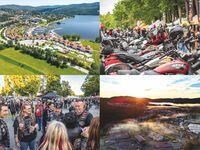
/cloudfront-us-east-1.images.arcpublishing.com/octane/XRI4GTLCVBA5NESASCBIR5LYQI.jpg)
/cloudfront-us-east-1.images.arcpublishing.com/octane/EF7566PXARGMBAOMLWTECYL3LE.jpg)
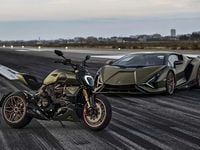
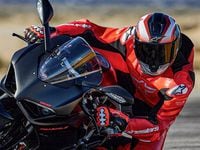

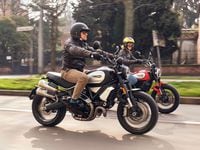
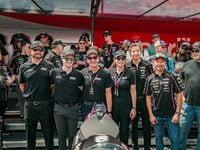
/cloudfront-us-east-1.images.arcpublishing.com/octane/3LASNXSWUZFFPISURDJF3OCWBU.jpg)
/cloudfront-us-east-1.images.arcpublishing.com/octane/2BHJKWUTBNBTLMQCKDNVEG6DKQ.jpg)
/cloudfront-us-east-1.images.arcpublishing.com/octane/MPHXIIV54NAU5L6E4SYZHCXVRM.jpg)



/cloudfront-us-east-1.images.arcpublishing.com/octane/WYXFHF4ZOBBTXELIZDB2FJXU64.jpg)
/cloudfront-us-east-1.images.arcpublishing.com/octane/K5FNV7ONUVDXJJ2H5BIWUGBGTI.jpg)
/cloudfront-us-east-1.images.arcpublishing.com/octane/MGVKP5VTNJHQ7FWNAHIWX4OHO4.jpg)
/cloudfront-us-east-1.images.arcpublishing.com/octane/6JEYTSIZQRHPJAVVPRLWZU63UM.jpg)
/cloudfront-us-east-1.images.arcpublishing.com/octane/XJU3VJZSDFEOVDBJTRXTTLTN5U.jpg)

/cloudfront-us-east-1.images.arcpublishing.com/octane/A6O3TEZF45BVFG2KKOUMPWEYM4.jpg)